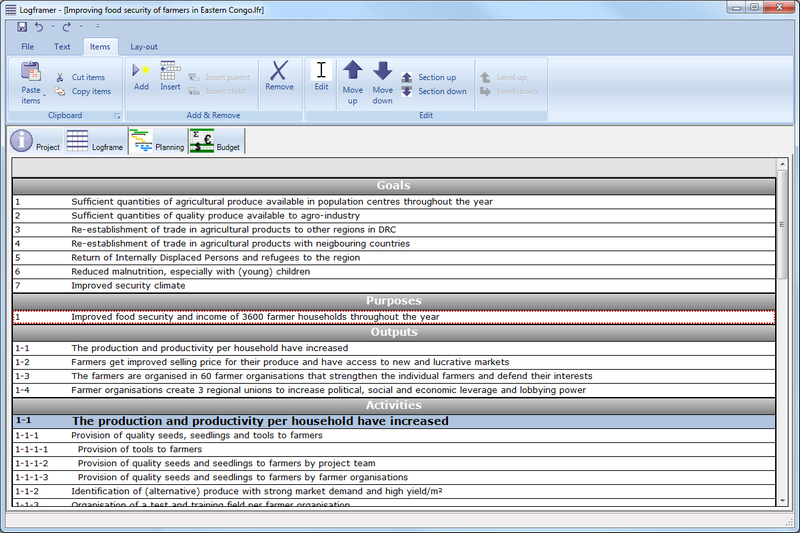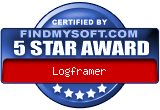Designing the Intervention Logic (Project Logic)

The Project Logic column is the first column of the logical framework. It contains:
- The Goals or long-term, society-wide objectives or challenges that your project will contribute to (top section).
- The Purpose of the project, which is the main objective or reason why the project exists in the first place. The purpose is a medium-term objective that we expect to be achieved by the end of the project (or sometimes even later). It is generally advised to identify a single purpose for each project, but in Logframer you can work with multiple purposes if you want.
- The Outputs are the tangible results of the activities. These are the items, knowledge, services, etc. that you get at the end of an activity, or at the end of a series of activities (process). Together, the outputs will enable you to achieve the main purpose of the project
- The Activities are what you have to do to achieve the necessary outputs that in turn will realise the main purpose of the project (bottom section). You can have singular activities, but also complex processes that consist of several activities or even sub-processes.
This description of the intervention logic is very much founded on the Logical Framework Approach (or PCM, or RBM). However, Logframer’s focus lies with project design in general and not with any particular approach. So you are completely free to use some sections and leave others empty (which you can hide, see Changing the lay-out of the logframe).
For instance, if you use the Outcome Mapping approach you can focus entirely on long-term and medium-term objectives (Goals and Purposes) and leave the Outputs and Activities sections empty. You can rename the Purposes section to Outcome challenge and the indicators column to Progress markers.
At first, it's wise to just note down some keywords or key ideas before you start to worry about the exact formulation. At this point you can still move things about with Logframer’s drag-and-drop abilities. You can use the text tools to improve the text or use the marker tool to indicate ideas that have to be elaborated further etc.
Using key-ideas at first allows you to focus on the essence and to make sure that everyone involved in the project understands these terms the same way you do. Watch out for complex concepts such as ‘gender’, ‘democratic’, ‘durability’... that may be understood differently in various cultural settings.





Add new comment